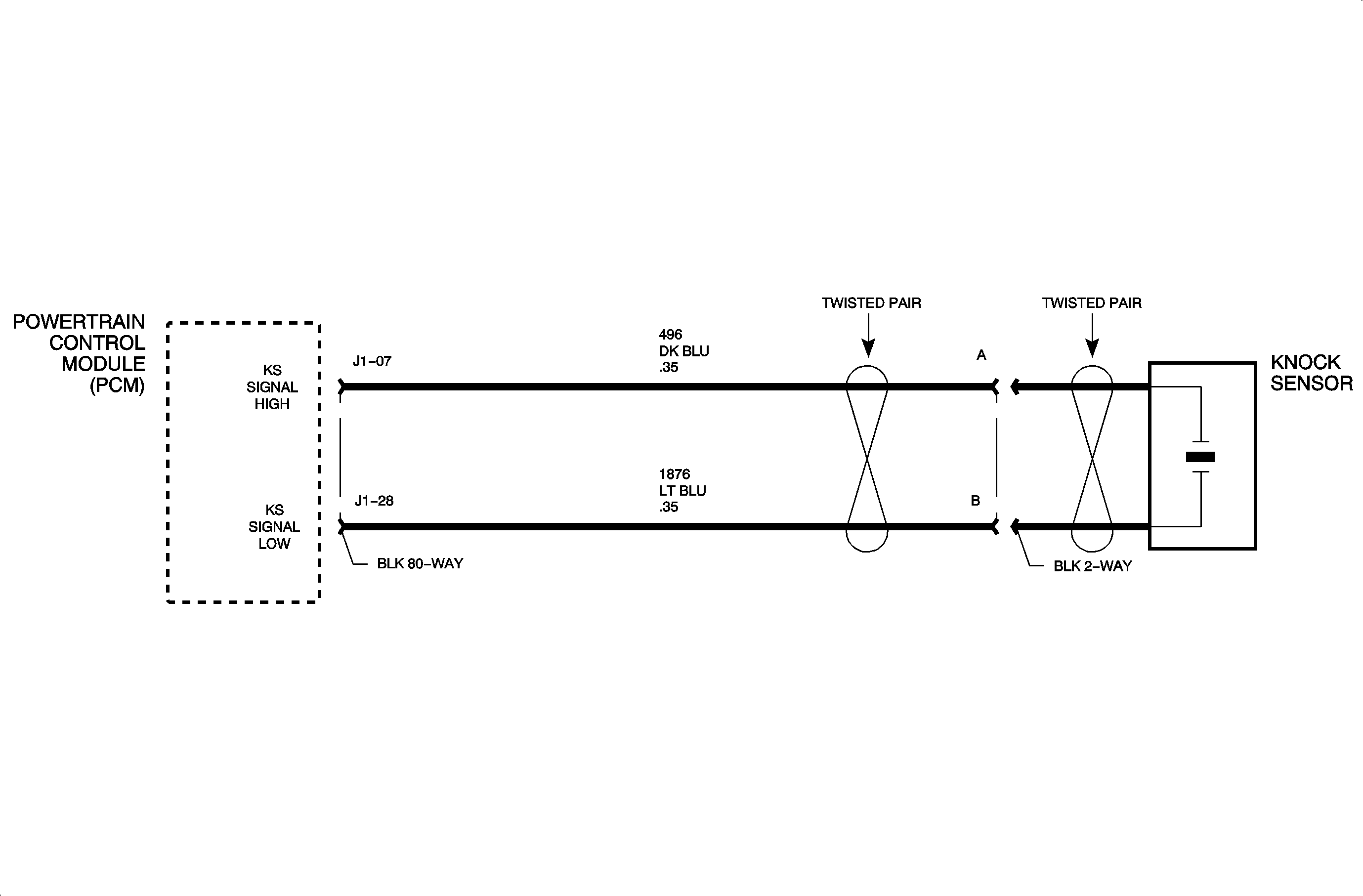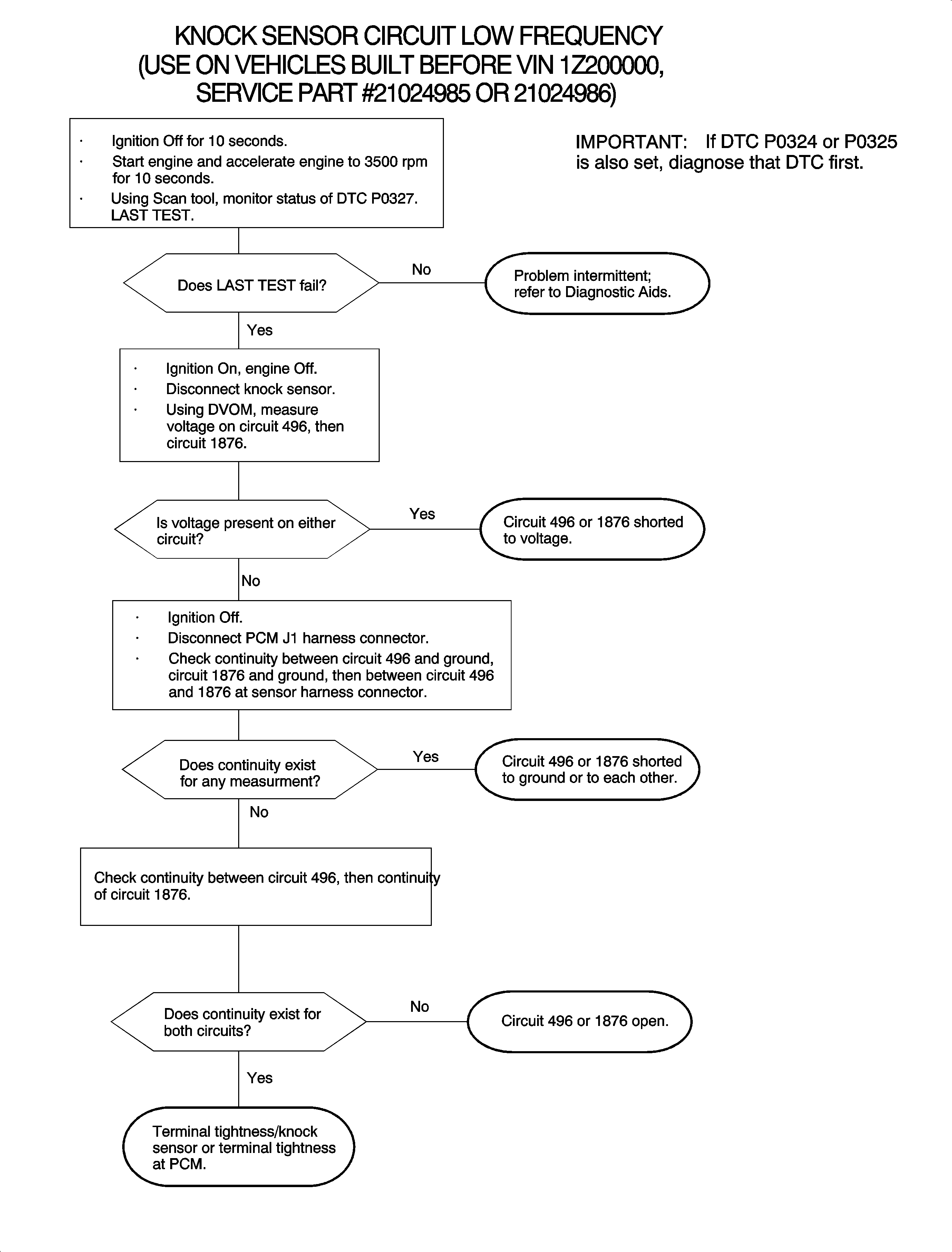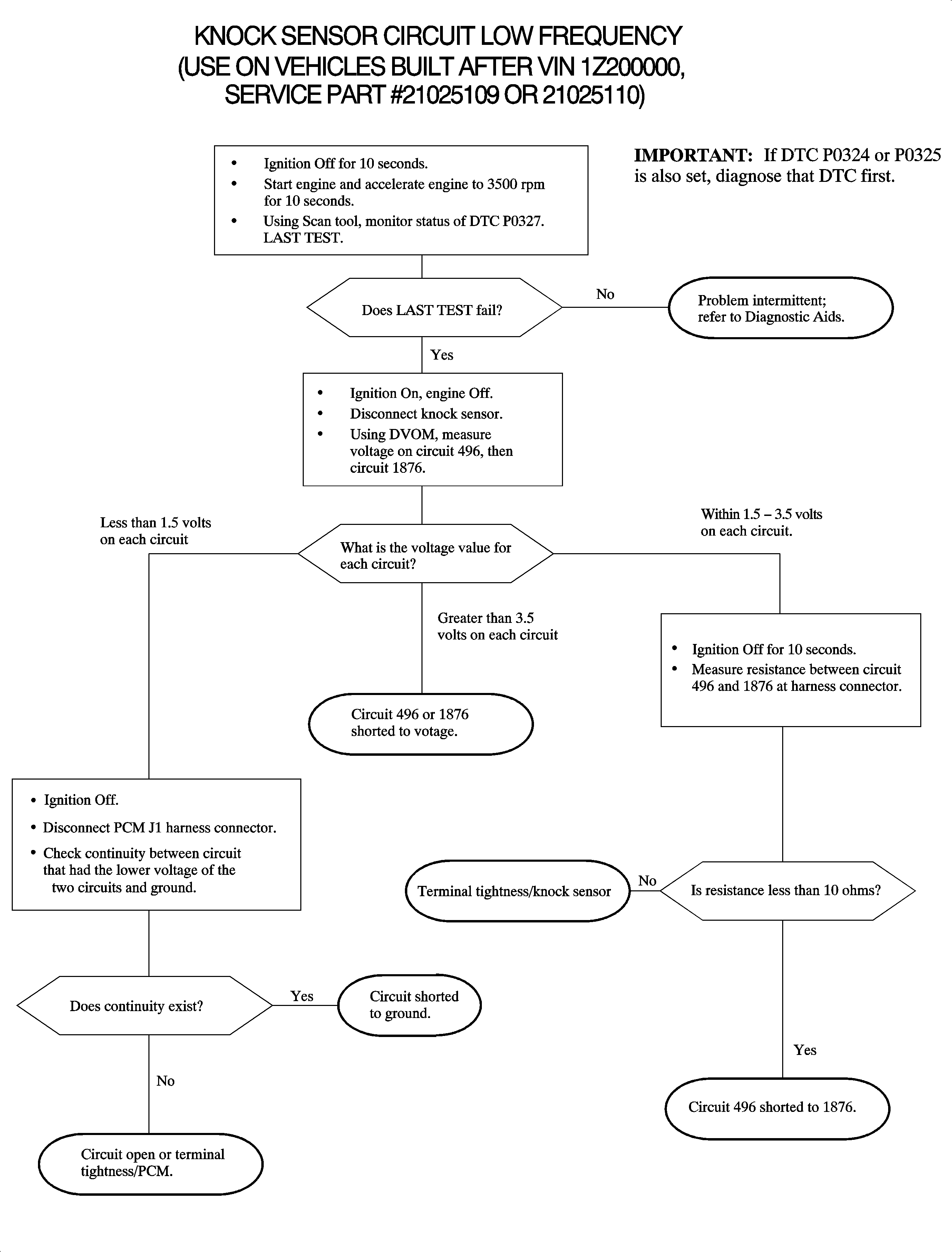
The knock sensor is a piezoelectric device that produces an AC voltage of different amplitude and frequency based on engine mechanical vibration. The amplitude and frequency are dependant on the level of knock the sensor detects. The powertrain control module (PCM) learns a minimum noise level at idle from the knock sensor and uses stored normal noise level calibration values for the rest of the RPM band. The knock sensor signal is only used during the top dead center combustion event of the firing cylinder. When in a combustion event, the PCM filters the knock signal and compares it to the normal calibration noise level for that RPM. If the PCM has determined that knock is present during the combustion event, it will retard timing on the next firing cylinders until the knock is eliminated. The PCM will always try to work back to a zero compensation level or no spark retard. DTC P0327 sets when the PCM does not detect any normal engine noise for a certain length of time.
DTC Parameters
DTC P0327 will set if the PCM does not detect a sufficient amount of normal knock sensor activity when:
| • | The condition exists for longer than 1 second. |
| • | The condition exists twice in one ignition cycle. |
| • | The engine speed is between 1400-4000 RPM. |
DTC P0327 diagnostic runs continuously with engine running between 1400-4000 RPM.
DTC P0327 is a type B DTC.
Diagnostic Aids
Important: If DTC P0324 or P0325 is also set, diagnose that DTC first. An internal knock sensor circuit fault in the PCM may cause DTC P0327 to set.
A loose knock sensor can cause DTC P0327.
Knock sensor resistance across terminals A and B should be infinite (open).
Tighten
Tighten the Knock Sensor to 25 N·m (19 lb ft).


